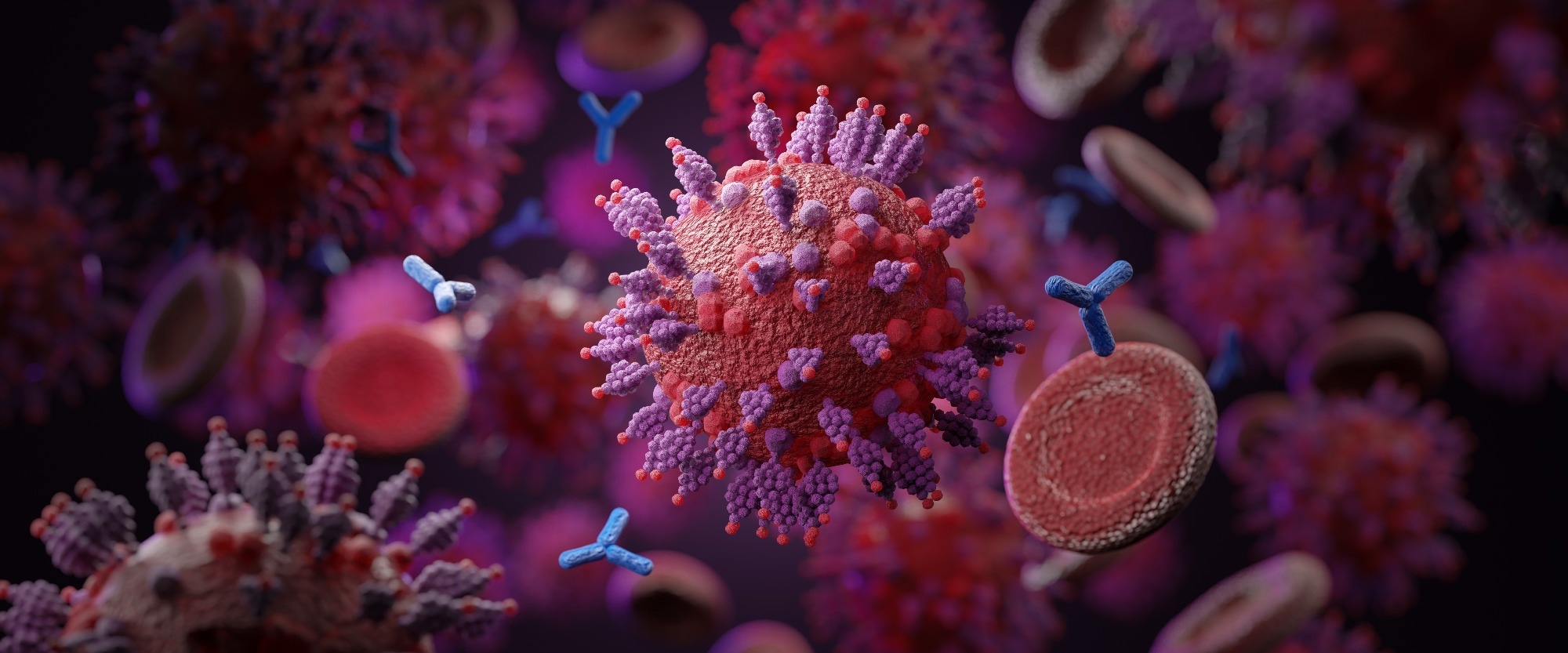In a recent study posted to the bioRxiv* preprint server, researchers performed an epidemic dynamic analysis to assess the severe acute respiratory syndrome coronavirus 2 (SARS-CoV-2) Omicron variant of concern (VOC)’s sub-VOC XBB.1.5 characteristics.

Background
The coronavirus disease 2019 (COVID-19) has led to unprecedented morbidity and mortality on a global scale. The efficacy of COVID-19 vaccines and other therapeutic agents, such as monoclonal antibodies, has been challenged by the continual emergence of SARS-CoV-2 variants with greater transmissibility, infectivity, immune-evasiveness, and viral fitness.
The present study’s authors previously reported on the virological features of several novel Omicron sub-VOCs. By December 2022, the Omicron XBB.1.5 sub-VOC, derived from the XBB.1 sub-VOC, the spike protein containing the F486P mutation, emerged and has been transmitting rapidly in the United States of America (USA) and other parts of the globe ever since. Further research is required to determine the virological characteristics of newly emerging variants to inform policy-making and guide the development of updated vaccines to reduce the health burden of COVID-19.
About the study
The present study extended the researchers’ previous analysis by elucidating XBB.1.5 characteristics.
Yeast surface display assays and pseudovirus assays were performed to evaluate XBB.1.5 SARS-CoV-2 spike (S) protein receptor-binding domain (RBD)-soluble angiotensin-converting enzyme 2 (ACE2) binding interaction affinity and XBB.1.5 infectivity, respectively. For the pseudovirus assays, HOS cells stably expressing human ACE2 and transmembrane serine protease 2 (TMPRSS2) were infected with SARS-CoV-2 pseudoviruses comprising variant spike proteins. Viral inputs were normalized based on HIV-1 (human immunodeficiency virus-1) p24 capsid protein amounts.
In addition, SARS-CoV-2 neutralization assays were performed to evaluate resistance to the Omicron BA.2 sub-VOC and Omicron BA.5 sub-VOC breakthrough infection (BTI) sera, using pseudoviruses comprising spike proteins of the B.1.1 strain, BA.2 strain, BA.5 strain, BQ.1.1 strain, XBB.1 strain, XBB.1 strain lacking the S:Y144del mutation (XBB.1+ins144Y) strain, XBB.1.5 strain, and the XBB.1.5 strain lacking the S:Y144del mutation (XBB.1.5+ins144Y).
Serum samples were obtained from 13 COVID-19 convalescent individuals who had received full COVID-19 vaccinations and had a prior history of Omicron BA.2 infection post-full COVID-19 vaccination, of which nine individuals had received two doses, and four individuals had received three doses of COVID-19 vaccines.
In addition, sera were obtained from 20 Omicron BA.5 infection convalescents, of which two individuals, 17 individuals, and one individual had received two doses, three doses, and four doses of COVID-19 vaccines, respectively. For all the serum samples, the team performed assays in triplicate to determine the NT50 (50 percent neutralization) titers. All the virological characteristics assessed were compared to those of the parental XBB.1 strain. Bayesian analysis was performed using a 95 percent confidence interval (C.I.).
Results
The relative estimated Re (effective reproduction number) of the XBB.1.5 strain was >1.20-fold higher than that for the parental XBB.1 strain, and the XBB.1.5 strain outcompeted the BQ.1.1 strain that dominated in the USA in December of 2022. The finding indicated that the XBB.1.5 strain would rapidly transmit globally in times to come.
The estimated infectivity and ACE2 binding affinities of the XBB.1.5 strain were three-fold and four-fold greater than the corresponding properties of the XBB.1 strain, respectively. The findings indicated that the XBB.1.5 strain exhibited remarkably stronger ACE2-binding affinity due to the F486P mutation, whereas the 144Y mutation elevated XBB.1 strain infectivity. The XBB.1.5 strain infectivity did not get enhanced by the 144Y mutation.
The XBB.1.5 strain showed robust resistance to Omicron BA.2 BTI sera (41.0-fold vs. B.1.1 strain, 20.0-fold vs. Omicron BA.2 strain) and BA.5 BTI sera (32.0-fold vs. B.1.1 strain, 10-fold vs. Omicron BA.5 strain), respectively. The 144Y insertion mutation significantly enhanced XBB.2.5 sensitivity to the Omicron BA.2 sub-VOC BTI sera and Omicron BA.5 sub-VOC BTI sera. Immunological resistance of the XBB.1.5 strain and the parent XBB.1 strain was comparable.
In addition, a part of the XBB.1.5 strain lost the S:Y144del mutation, which enhances the immune evasiveness but reduces infectivity. However, the XBB.1.5 strain lacking the S:Y144del (XBB.1.5+ins144Y) mutation exhibited a relatively lower effective reproduction number than the original XBB.1.5 strain.
Overall, the epidemics dynamics analysis findings showed the novel XBB.1.5 strain as the most accomplished XBB strain to date, comprising the F486P mutation in the spike protein, that enhanced ACE2 receptor binding affinity with no remarkable loss in immunological resistance, leading to higher transmissibility.
*Important notice
bioRxiv publishes preliminary scientific reports that are not peer-reviewed and, therefore, should not be regarded as conclusive, guide clinical practice/health-related behavior, or treated as established information.









![Best Weight Loss Supplements [2022-23] New Reports!](https://technologytangle.com/wp-content/uploads/2022/12/p1-1170962-1670840878.png)




